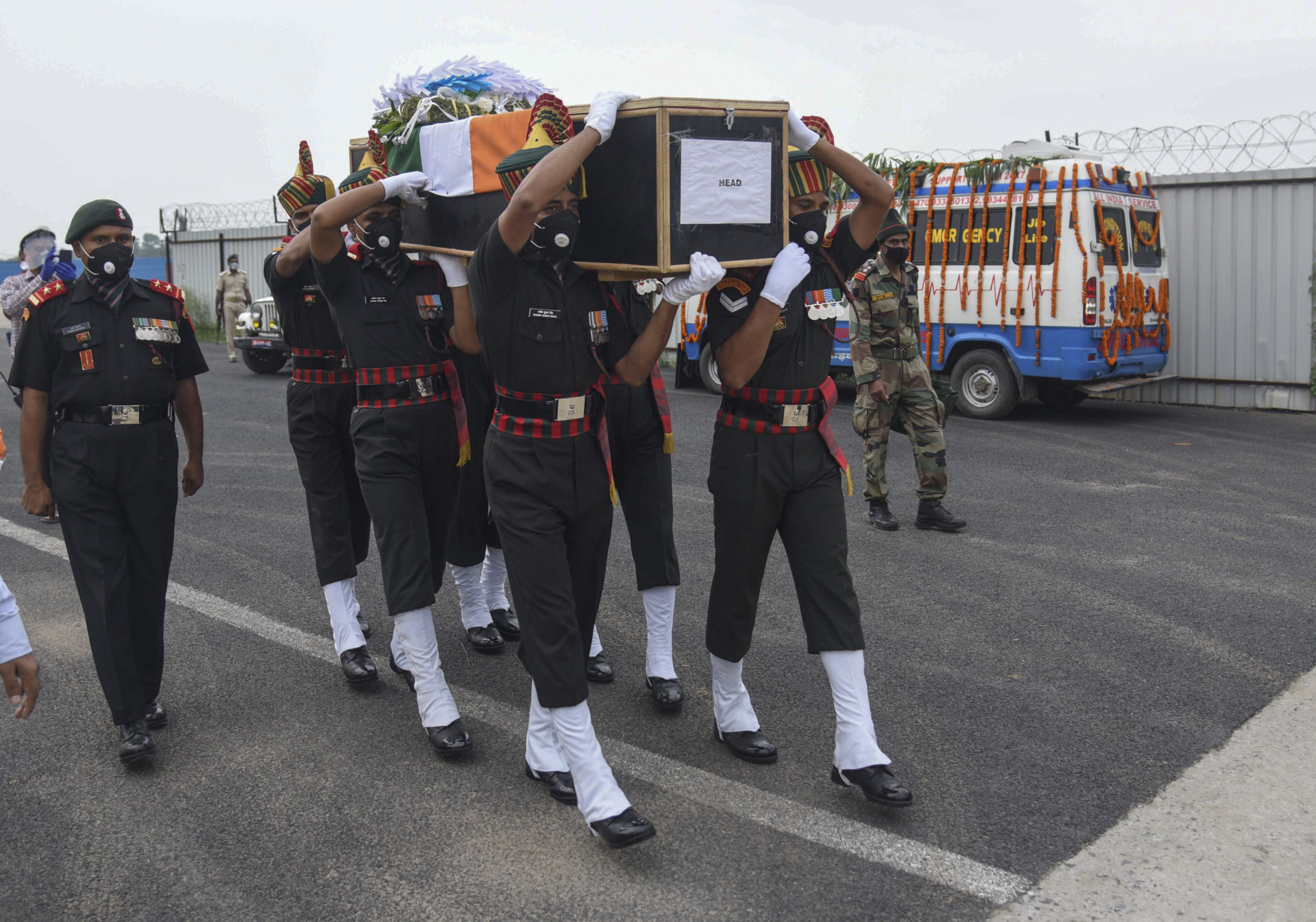India cautions China against untenable sovereignty claims

Indian army soldiers carry the coffin of their colleague Sunil Kumar, killed during a confrontation with Chinese soldiers in the Ladakh region, as the body was brought to Jai Prakash Narayan Airport, in Patna, Bihar state, India, Wednesday, June 17, 2020. Twenty Indian troops were reportedly killed, in the clash in the Ladakh region late Monday that was the first deadly confrontation on the disputed border between India and China since 1975. (AP Photo/Aftab Alam Siddiqui)
NEW DELHI — India on Thursday cautioned China against making “exaggerated and untenable claims” on the sovereignty of the Galvan Valley area even as both nations tried to end a standoff in the high Himalayan region where their armies engaged in a deadly clash.
Twenty Indian troops were killed in the clash Monday night that was the deadliest conflict between the sides in 45 years. China has not disclosed whether its forces suffered any casualties.
Responding to China’s claim to the valley, India’s External Affairs Ministry spokesman Anurag Srivastava said both sides have agreed to handle the situation responsibly. “Making exaggerated and untenable claims is contrary to this understanding,” he said in a statement.
Both sides accused each other of instigating the clash between their forces in the valley, part of the disputed Ladakh region along the Himalayan frontier.
Media reports said senior army officers of the two sides met Wednesday to defuse the situation, but there was no confirmation from either side.
Article continues after this advertisementIndian security forces said neither side fired any shots, throwing rocks and trading blows instead. The Indian soldiers, including a colonel, died of severe injuries and exposure in the area’s sub-zero temperatures, officials said.
Article continues after this advertisementThe clash escalated a standoff in the disputed region that began in early May, when Indian officials said Chinese soldiers crossed the boundary at three different points, erecting tents and guard posts and ignoring warnings to leave. That triggered shouting matches, stone-throwing, and fistfights, much of it replayed on television news channels and social media.
Chinese Foreign Minister Wang Yi warned New Delhi not to underestimate Beijing’s determination to safeguard what it considers its sovereign territory. His comments came in a phone call Wednesday with his Indian counterpart, Subrahmanyam Jaishankar.
Wang said China demanded that India conduct a thorough investigation and “harshly punish” those responsible.
“The Indian side would best not make an incorrect judgment of the situation, would best not underestimate China’s strong determination to safety its sovereign territory,” Wang said in a statement issued by the foreign ministry.
He repeated China’s claims that India was solely responsible for the conflict, saying Indian forces had crossed the Line of Actual Control that divides the thousands of troops from both sides deployed in the area.
Jaishankar, in turn, accused China of erecting a structure in the Galvan Valley, which he called a “premeditated and planned action that was directly responsible for the resulting violence and casualties,” according to a statement.
He added that the incident would have “serious repercussions” on India’s relationship with China, but that both sides were committed to further disengaging on the remote plateau of the Himalayan terrain.
Indian Prime Minister Narendra Modi hailed the soldiers killed in the clashes.
“Their sacrifices won’t go to waste,” he said. “For us, the unity and sovereignty of the country is the most important thing. India wants peace, but when provoked, it is capable of giving a fitting reply, be it any kind of situation.”
While experts said the two nations were unlikely to head to war, they also believe easing tensions quickly will be difficult.
China claims about 90,000 square kilometers (35,000 square miles) of territory in India’s northeast, while India says China occupies 38,000 square kilometers (15,000 square miles) of its territory in the Aksai Chin Plateau in the Himalayas, a contiguous part of the Ladakh region.
India unilaterally declared Ladakh a federal territory while separating it from disputed Kashmir in August 2019. China was among the handful of countries to strongly condemn the move, raising it at international forums including the U.N. Security Council.
Thousands of soldiers on both sides have faced off over a month along a remote stretch of the 3,380-kilometer (2,100-mile) Line of Actual Control, the border established following a war between India and China in 1962 that resulted in an uneasy truce.